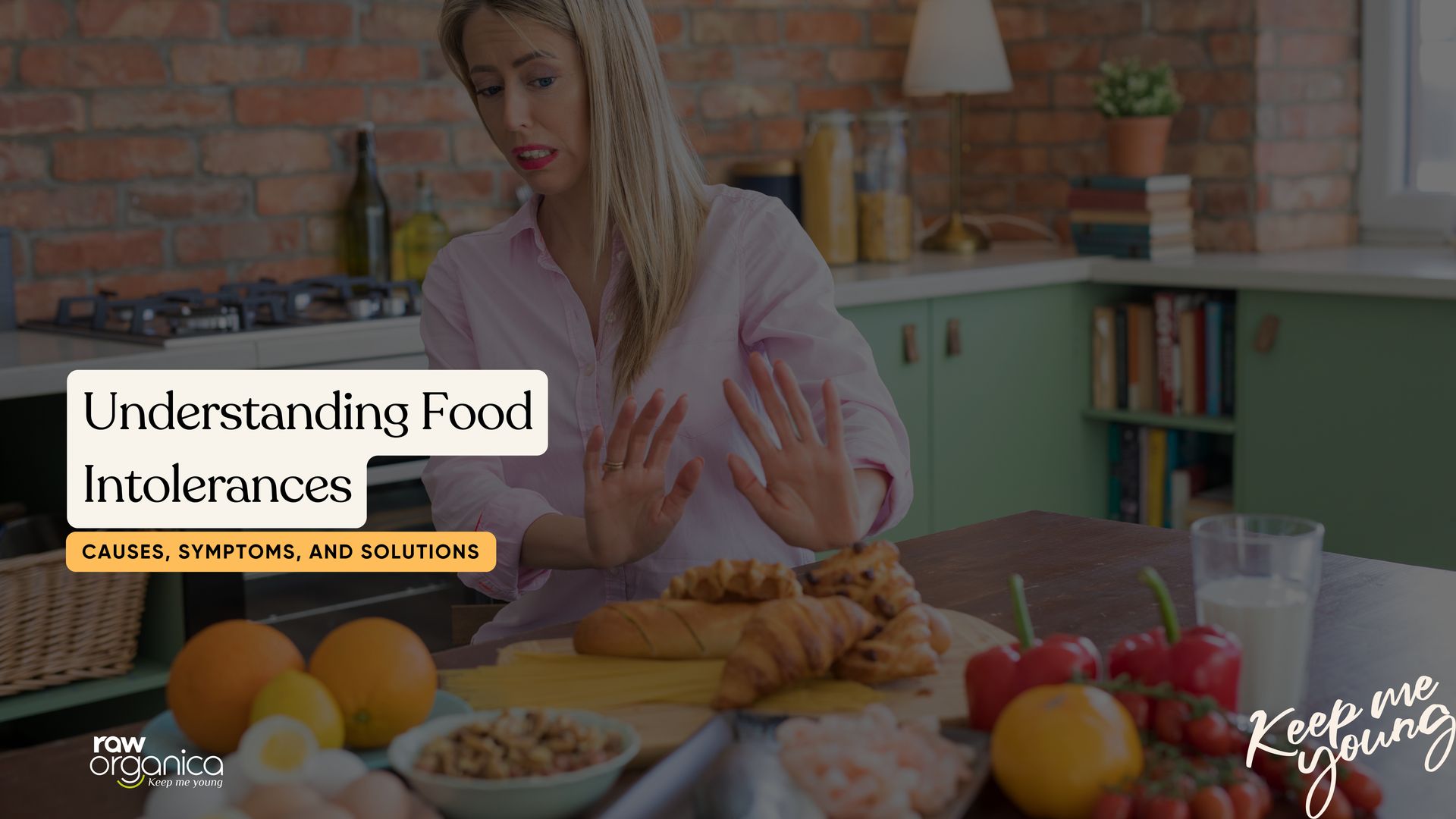Food intolerances affect millions of people worldwide, often in ways that subtly disrupt daily life. Unlike food allergies, which involve the immune system, food intolerances are primarily a digestive issue, leading to discomfort after consuming certain foods. In this comprehensive guide, we’ll explore the scientific basis of food intolerances, how to identify problematic foods, and how an Elimination Diet can be a game-changer for optimising your health.
The Science Behind Food Intolerances
Food intolerances occur when the digestive system struggles to break down certain components in foods. The most common culprits include:
- Lactose (found in dairy products): Caused by a deficiency of lactase, the enzyme that breaks down lactose.
- Gluten (a protein in wheat, barley, and rye): Can lead to non-celiac gluten sensitivity or celiac disease in severe cases.
- Histamines (found in aged cheeses, fermented foods, and alcohol): Resulting in headaches, flushing, and hives.
- FODMAPs (fermentable oligosaccharides, disaccharides, monosaccharides, and polyols): These short-chain carbohydrates ferment in the gut, causing bloating, gas, and diarrhea.
Research shows that genetics, gut health, and environmental factors all play a role in the development of food intolerances. Advanced lab testing can identify enzyme deficiencies, microbiome imbalances, and genetic predispositions that contribute to intolerances.

Identifying the Best Foods for Your Unique System
Every individual has a unique biochemical makeup. This means what works for one person might not work for another. Here’s how to pinpoint the best foods for your body:
- Track Symptoms: Maintain a detailed food and symptom journal for at least two weeks. Note what you eat and any digestive or systemic reactions (bloating, fatigue, skin rashes, etc.).
- Consult a Specialist: Functional nutritionists and dietitians can analyse patterns in your diet and symptoms. They might recommend food sensitivity testing or gut health evaluations.
- Nutrition Plans: With your data in hand, develop a tailored nutrition plan focusing on nutrient-dense, non-triggering foods that support optimal health.
Implementing an Elimination Diet
The Elimination Diet is a systematic approach to identifying food intolerances. It involves removing potential trigger foods, observing symptom changes, and reintroducing foods one at a time to pinpoint specific intolerances.
Step-by-Step Elimination Diet Guide:
- Preparation (Week 1): Identify common trigger foods (dairy, gluten, soy, corn, eggs, nightshades, etc.) and plan for their removal. Stock up on whole, unprocessed alternatives.
- Elimination Phase (Weeks 2-4): Remove identified foods entirely. Focus on meals rich in fruits, vegetables, lean proteins, and healthy fats. Monitor and document any changes in symptoms.
- Reintroduction Phase (Weeks 5-8): Gradually reintroduce eliminated foods, one at a time, every 3-4 days. Track reactions closely to identify any food-related symptoms.
- Final Phase: Create a long-term dietary plan based on your findings, maintaining a focus on nourishing, intolerance-free foods.
Common Types of Food Intolerances
Lactose Intolerance: Characterised by bloating, diarrhea, and gas after consuming dairy. Solutions include lactase enzyme supplements or lactose-free products.
Gluten Intolerance (Non-Celiac): Symptoms include brain fog, fatigue, and joint pain. Gluten-free grains like quinoa and rice offer safe alternatives.
Fructose Malabsorption: Excess fructose can cause digestive distress. Limit high-fructose fruits like apples and pears, and opt for berries or citrus fruits.
Histamine Intolerance: Symptoms range from headaches to nasal congestion. Avoid aged cheeses, fermented foods, and alcoholic beverages.
The Elimination Diet: Benefits and Challenges
Benefits:
- Improved digestion and energy levels.
- Clearer skin and reduced inflammation.
- Enhanced mental clarity and mood stability.
Challenges:
- Social limitations and meal planning difficulties.
- Risk of nutrient deficiencies if not carefully managed.
By adopting a mindful approach and seeking expert guidance, these challenges can be minimised.
Raworganica Nutrition’s Role in Food Intolerances
We specialise in guiding clients through personalised nutrition journeys, including Elimination Diets. Our approach emphasises:
- Root Cause Analysis: Using functional lab testing to uncover the underlying drivers of food intolerances.
- Personalised Care: Developing tailored meal plans and supplement strategies to address individual needs.
- Ongoing Support: Providing education and tools to empower clients in their health journey.
Our philosophy centers around understanding your body’s unique signals and supporting its natural ability to heal.
FAQ: Common Questions About Food Intolerances and the Elimination Diet
Start by tracking your symptoms and consult a nutritionist for testing and analysis.
Yes, they can arise due to changes in gut health, stress, or environmental factors.
Typically, the elimination phase lasts 2-4 weeks, but it can vary based on individual needs and responses.
Consider potential hidden intolerances or seek further testing and guidance from a functional nutrition expert.
Digestive enzymes, probiotics, and specific nutrients like glutamine or zinc can support gut health and alleviate symptoms.